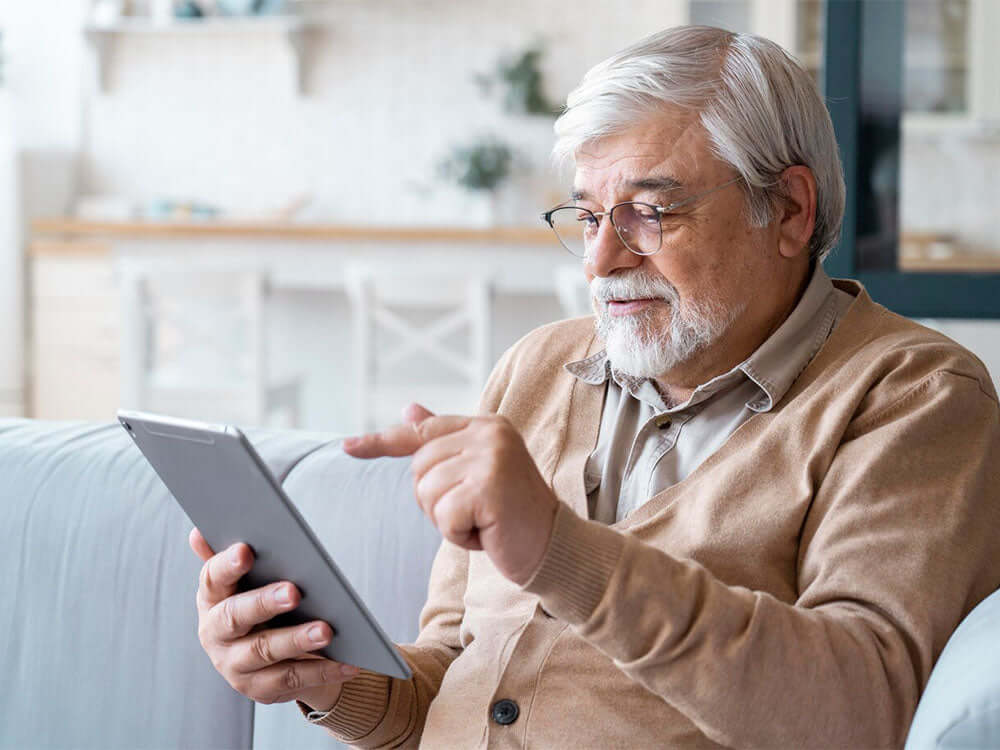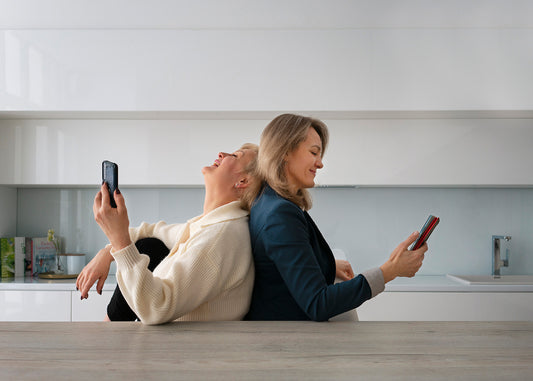
Smart home for seniors: how to make the home safe and accessible
Share
"Smart Home" is an incredibly appealing concept for younger users but, at the same time, it might seem daunting and too challenging for elderly users in their third or fourth age.
In reality, the technologies that make a smart home can be extremely useful in improving the quality of life for older people, offering simple and effective tools that transform the home environment into a place that is not only more comfortable but also more accessible, sustainable, efficient, and safe.
Over the years, all individuals inevitably face growing daily challenges that threaten their independence, especially if they live alone. The challenges associated with aging are numerous and not necessarily limited to managing potential health issues.
Consider, for example, social isolation, and how the lack of companionship and relationships can impact the emotional well-being of the elderly. Or security concerns, an important worry for those who feel more vulnerable than others to domestic accidents or the intrusion of strangers. Furthermore, elderly people living alone may experience objective difficulty accessing healthcare services, transportation, and social support: this lack of access can limit their opportunities to receive the necessary support to maintain a good level of well-being.
Then there is the issue of self-sufficiency, which can be particularly challenging for individuals facing serious health or mobility problems, where daily activities such as house cleaning, shopping, and even meal preparation can become increasingly difficult to manage independently. Finally, managing chronic illnesses, scheduling appointments, consulting with doctors, and taking medications are also complex challenges to solve without adequate support.
Undoubtedly, addressing these challenges requires a holistic approach that considers the specific needs of each elderly individual. It is important to provide emotional, social, and practical support to ensure that elderly people living alone can maintain a good level of well-being and quality of life, and in this context, technology – and more precisely, the Smart Home – can prove to be crucial.
The Importance of Safety and Accessibility for Seniors and the Benefits Offered by the Smart Home
Safety and accessibility are two of the main challenges that people inevitably face with advancing age: both conditions are essential for maintaining a satisfactory standard of living and the highest degree of possible independence.
However, the homes we live in are often poorly equipped to meet these needs, especially when there are elderly residents, who are inherently more at risk than younger individuals regarding falls, domestic accidents, and difficulties in performing various daily activities.
This is where the Smart Home comes into play, with its ability to integrate advanced yet user-friendly technologies that concretely improve home safety and accessibility.

How the Smart Home Enhances the Quality of Life for Seniors
Considering what has been discussed so far, a Smart Home where elderly residents live should be primarily designed to meet accessibility and safety needs, and therefore integrate both smart appliances and AAL systems (Ambient Assisted Living): the latter are intelligent technologies designed to promote active and healthy aging, consisting of assistance solutions and systems that enhance autonomous home management.
So, what should a Smart Home tailored for the elderly include?
- Monitoring and security systems: integrating security cameras and motion sensors can help constantly monitor the home, detecting intrusions or risky situations. Moreover, these devices can be connected to alarm systems that immediately alert family members or assistance services in case of emergencies.
- Life-saving systems: innovative sensors are now available that, in addition to detecting serious falls, non-invasively monitor vital parameters such as heart rate, blood pressure, sleep quality, and physical activity levels of the elderly, always indicating their location. In case of need, these devices send an alarm, enabling immediate assistance. Furthermore, smart technology facilitates communication between the elderly and healthcare providers, making emergency response quicker when needed.
- Intelligent lighting systems: in a Smart Home, it is possible to automatically raise or lower blinds, turn lights on or off according to habits, and even unfold or rewind sunshades. These solutions are very useful for elderly residents, not only relieving them of burdensome tasks but also increasing visibility at home, reducing the risk of falls or stumbles at night, and improving sleep quality: pre-programmed circadian lighting follows natural sleep/wake rhythms, reducing light levels when it's time to sleep and gradually increasing them as the sun rises, for a more peaceful awakening.
- Voice assistants and voice commands: this type of integration allows elderly people to control connected devices (including those dedicated to assistance) simply by using their voice. Voice assistants and commands are very effective in case of mobility limitations and can also be used to remind of important appointments (such as taking medication).
- Smart locks and automatic doors/gates: smart locks and automated entries allow seniors to enter and exit their homes without having to manipulate keys or handles, designed to maximize convenience and accessibility. Furthermore, they enhance security and reduce the risk of intrusion (in this regard, stay tuned for major updates: the Dry Contact Module).
- Tracking of energy consumption: thanks to the specific monitoring function, Freedompro Home app allows simple and precise monitoring of daily and overall energy consumption of all accessories, in real time.
- Smart oven: even the oven can be smart and connected, heating and cooking food autonomously. Once the correct cooking degree is reached, the oven turns off automatically and sends a notification. This is a very convenient solution for the elderly and also helps reduce the risk of fire due to forgetfulness.
- Smart thermostat: smart thermostats directly connected to the app allow you to set the ideal temperature in the home and maintain it consistently, maximizing home comfort and simultaneously optimizing energy consumption.
- Cleaning devices: from robot vacuum cleaners to those that wash windows, there are many connected devices dedicated to cleaning that can lighten the burden of elderly residents. These solutions, autonomous and equipped with efficient sensors, manage to clean perfectly without requiring any intervention, minimizing fatigue and maintaining a pleasant home environment.
In addition to these direct benefits, the Smart Home can be an invaluable support tool for family members, allowing them to remotely monitor the well-being of elderly relatives, check on them in case of alarms, and communicate directly via remote cameras or intercoms. Furthermore, in case of planned medical appointments, it is possible to use the services of the health professionals of the aforementioned in order to facilitate remote consultation, and Management: finally, it is a good idea to insert the into should prove as simple and accessible as possible.
Conclusion
Technological advances such as the Smart Home represent a concrete and viable solution to the challenges of aging. By integrating smart appliances, monitoring systems, and assisted living technologies, the Smart Home enhances the quality of life for elderly residents, ensuring greater safety, accessibility, and comfort while promoting independence and well-being. Moreover, it provides a sense of security for families, knowing that their loved ones are living in an environment that supports their needs effectively.


